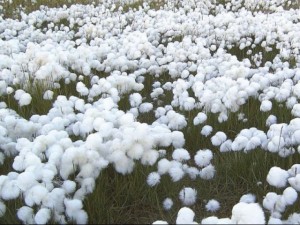Monday, January 17, 2011
Wool May Run Short as Australian Output Drops, Cape Wools Says
 Wool may be in short supply as Australian production falls and European demand improves, according to an industry group in South Africa, the world’s second-largest producer of the fiber for the textile market.
Wool may be in short supply as Australian production falls and European demand improves, according to an industry group in South Africa, the world’s second-largest producer of the fiber for the textile market.
“There is a significant worry developing among users of wool that there will be a shortage of supply,” Andre Strydom, general manager at Cape Wools SA in Port Elizabeth, South Africa, said by phone on Jan. 12. A worldwide scarcity of cotton also is stoking demand, he said.
The Australian Wool Production Forecasting Committee last month cut its estimate for output in the 2010-11 season, citing “worsening seasonal conditions” in the state of Western Australiathat reduced fleece weights. Wool production is sliding in the country because of years of drought and floods that have swamped the state of Queensland, according to Strydom.
“It will take about two to four years before we see an appreciable increase in Australia’s wool production,” he said. “Rebuilding stocks in Australia will lead to an increase, but nowhere near the production levels seen a decade ago.”
Output may come to 335 million kilograms (738.5 million pounds) in the season, below the prior estimate of 340 million kilograms, the committee said Dec. 10. That compares with the 475 million kilograms produced in Australia during the 2004-05 season, according to statistics from the committee.
Highest Since 2006
Australia is the world’s biggest supplier of wool for textiles.
The fiber in South Africa sold for the highest price since 2006 at an auction last week, and buyers purchased the highest percentage of bales on offer since November. Stronger Western European demand has offset a ban on imports into China, according to Strydom.
Prices rose 12 percent to 70.54 rand ($10.17) a kilogram at this year’s first weekly sale on Jan. 12, figures from Cape Wools showed. Lempriere SA and other buyers purchased 98 percent of the 14,189 bales up for sale.
“We expect this increased demand to last for the next six months,” Strydom said. “I’m confident prices will stay around the current level of between 65 and 75 rand.”
A scarcity of cotton has made wool more competitive with the rival fiber, according to Strydom. Wool is usually five times more expensive, he said. Flooding may reduce cotton exports fromPakistan by 25 percent in the current fiscal year, according to a November estimate from the Karachi Cotton Brokers Association.
Surging Cotton
Cotton traded in New York jumped 92 percent last year after a 54 percent gain in 2009. The fiber for March delivery closed at $1.4144 a pound on Jan. 14. Trading is shut today for the Martin Luther King Day holiday.
China has barred imports of South African wool since an outbreak of Rift Valley fever in March 2010. The Asian country typically bought up to 70 percent of South African production, Strydom said. South African producers are negotiating with Chinese health authorities to lift the ban.
“We expect to see the increased level of exports into Europe continue while the China issue is being resolved,” Strydom said.
Main export destinations for South African wool include Italy, France and Japan as well as China, according to the national agriculture department. Production of the fiber also is slipping in South Africa, due mainly to unseasonal rains in many production areas that delayed shearing, according to Strydom.
“We’ll be able to pick up some of that slack by June,” he said.

This post was written by: HaMienHoang (admin)
Click on PayPal buttons below to donate money to HaMienHoang:
Follow HaMienHoang on Twitter










0 Responses to “Wool May Run Short as Australian Output Drops, Cape Wools Says”
Post a Comment